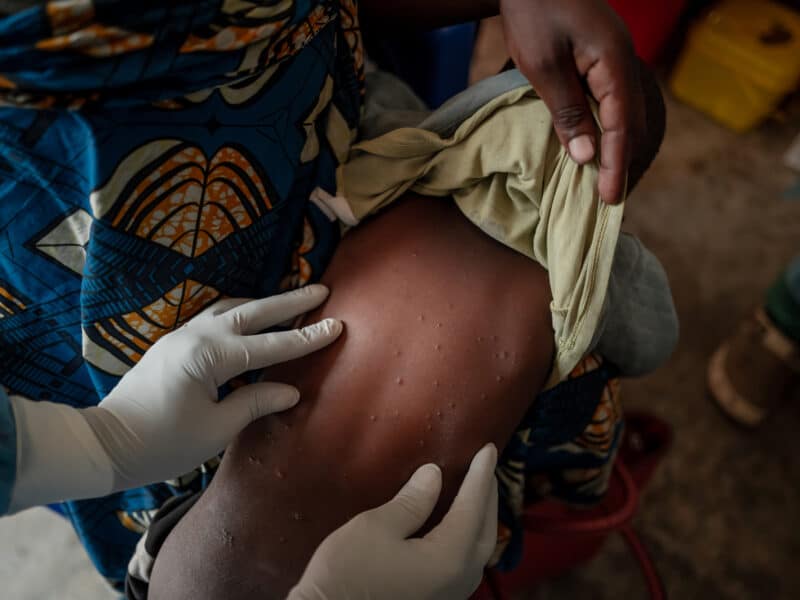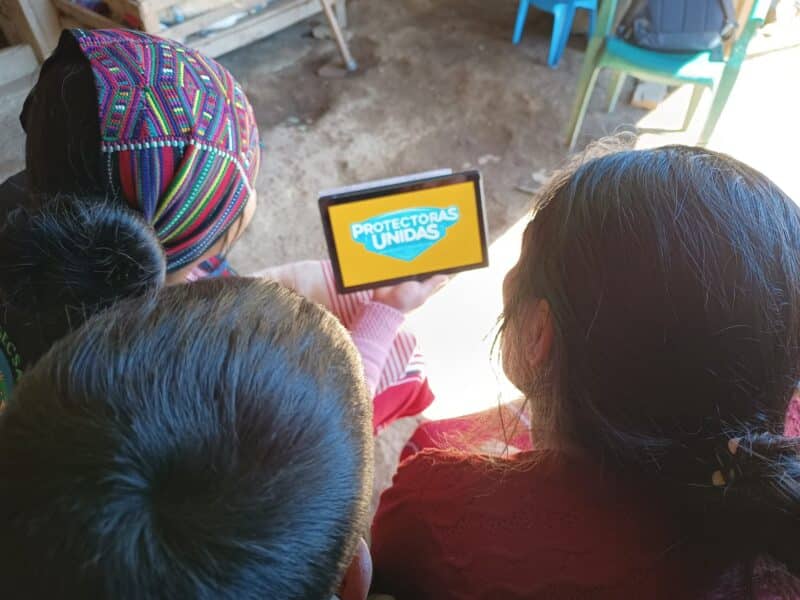In the Democratic Republic of Congo (DRC), where the average income is less than $450 a year, people who may think nothing of buying a couple of small bottles of soda to offer their guests might balk at the perceived high cost of prenatal care at a health facility.
But what happens when people learn this truth, that two or three small bottles of soft drinks and a follow-up doctor’s visit for a pregnant woman cost roughly the same 2,500 Congolese francs (about 87 cents USD)?
To counter common misconceptions in DRC that services like modern contraception, malaria treatment and delivery in a health facility are prohibitively pricey, the Johns Hopkins Center for Communication Programs-led Breakthrough ACTION project created a fun and interactive cost comparison activity.
“The community tends to believe that primary health care costs are excessively expensive,” says CCP’s Carole Ilunga, chief technical advisor for gender for Breakthrough ACTION DRC. “As a result, they don’t seek routine health care.
“But once they participate in the comparative costs activity,” she says, “they quickly discover on their own that the cost of care is not as exorbitant as they might think.”
Says CCP’s Claudia Vondrasek, senior technical advisor for the DRC team: “We wanted to know if people would opt to use health services over other sources of care – such as religious leaders who are not trained to provide care – if they understood that these were affordable. The answer was yes.”
The activity, featured in engaging community events designed for couples to test their knowledge about health, compares the prices of commonly purchased goods, and the cost of the primary health care services offered by health centers such as prenatal care or care for fever or coughs.
The cost of a small bottle of beer is greater than the cost of a health care consultation card, a document required to access the health system. For less than the cost of a month of men’s haircuts, a pregnant woman can receive the full package of prenatal care. Soon after the comparison activity gets underway, Vondrasek says, people quickly realize their perceptions of health costs were inaccurate.
An estimated 74.6 percent of Congolese people lived on less than USD $2.15/day in 2023. Meanwhile, maternal deaths are high (473 per 100,000 live births) as are infant deaths (70 per 1,000 live births) and six in 10 people don’t use formal health services. Cost is a big factor and there can be tragic consequences related to the delays in seeking health care at health facilities.
The cost comparison activity, which has now been conducted across nine provinces, is part of a broader campaign, VIVA!, developed by CCP and its partners and used to promote health behaviors in everything from reproductive health and family planning to water, sanitation and hygiene to zoonotic diseases, including COVID and mpox.
Though it started out at couples’ parties, the cost comparison activity has been used in health facilities during well baby clinics, marketplaces, with church groups, or anywhere that a crowd has gathered, if you have paper and pencil. There is even a household version of the activity used by community health workers in their home visits.
One women’s organization told Ilunga that they used the general concept to brainstorm ideas on how to pay for seeds, the price of which was rising. Together, the women decided that if they temporarily stopped buying hair extensions, they could afford the supplies to grow the next year’s crop.
“The soft drinks that I buy for my friends can cost considerably more than my wife’s [prenatal care] services,” a man from the Haut Katanga province told Breakthrough ACTION. Said another: “People go to the health center [now] because after participating in the [cost] comparison [activity], we realize the price of services is affordable.”
The formative research conducted in six health zones in two provinces in 2019 identified the perceived high costs as one of the greatest barriers to care seeking at health services..
“The cost comparison activity has helped people to understand that health care is not as expensive as they think, and that they spend almost the equivalent amount of money on other, often non-vital, expenses,” says Colin Elumba, who works with project partner Save the Children.
The team distributed reminder tickets (conveying no financial value) during the community activities to encourage people to seek health services after learning of the affordability of care. In three provinces, up to 21 percent of people who received the reminder ticket presented it for health services, though this figure varies by province.
Most tickets were redeemed by women (69 percent), who primarily used tickets for prenatal care visits (29 percent) and for treatment of a child’s fever (25 percent). Men most redeemed tickets for treatment of a child’s fever (45 percent) and cough (24 percent).
After the cost comparison activity, when people acknowledge that primary health care costs are affordable, there’s a next step: How do people start to save money to pay for health care – including emergency visits for fevers – given that it is in reach?
The answer: savings banks.
This activity helps households set aside very small amounts for current and future health care costs. It started as a plastic bottle prototype tested by Breakthrough ACTION in two provinces. It evolved into small wooden boxes that could be locked. The boxes were distributed at VIVA! activities such as couples’ parties or at market quizzes to facilitate savings for health care costs.
Now, individuals and communities are creating their own savings boxes after seeing how useful they are, and they are solving problems locally. A health center in Kipushi, Haut Katanga province, for example, created its own savings box and raised enough money through small community donations to build a maternity ward in response to local requests.
“Based on what we earn from our farming activities,” says a man from South Kivu Province, “we are now starting to divide up our produce, some for consumption and others for storage, and to pay off previous debts to the health center. In the event of illness, we use our [new health savings] to pay for treatment.”
The Breakthrough ACTION team from DRC will present its findings on the cost comparison activity at the first webinar in its series, From Insight to Impact: Leveraging SBC for Sustainable Change, on Tuesday, Sept. 24, at 9 a.m. The first webinar is called Innovative SBC Solutions for Health and will feature two other presentations, one from Nigeria on tuberculosis screenings and one from Ethiopia on maternal mental health. Register here.





